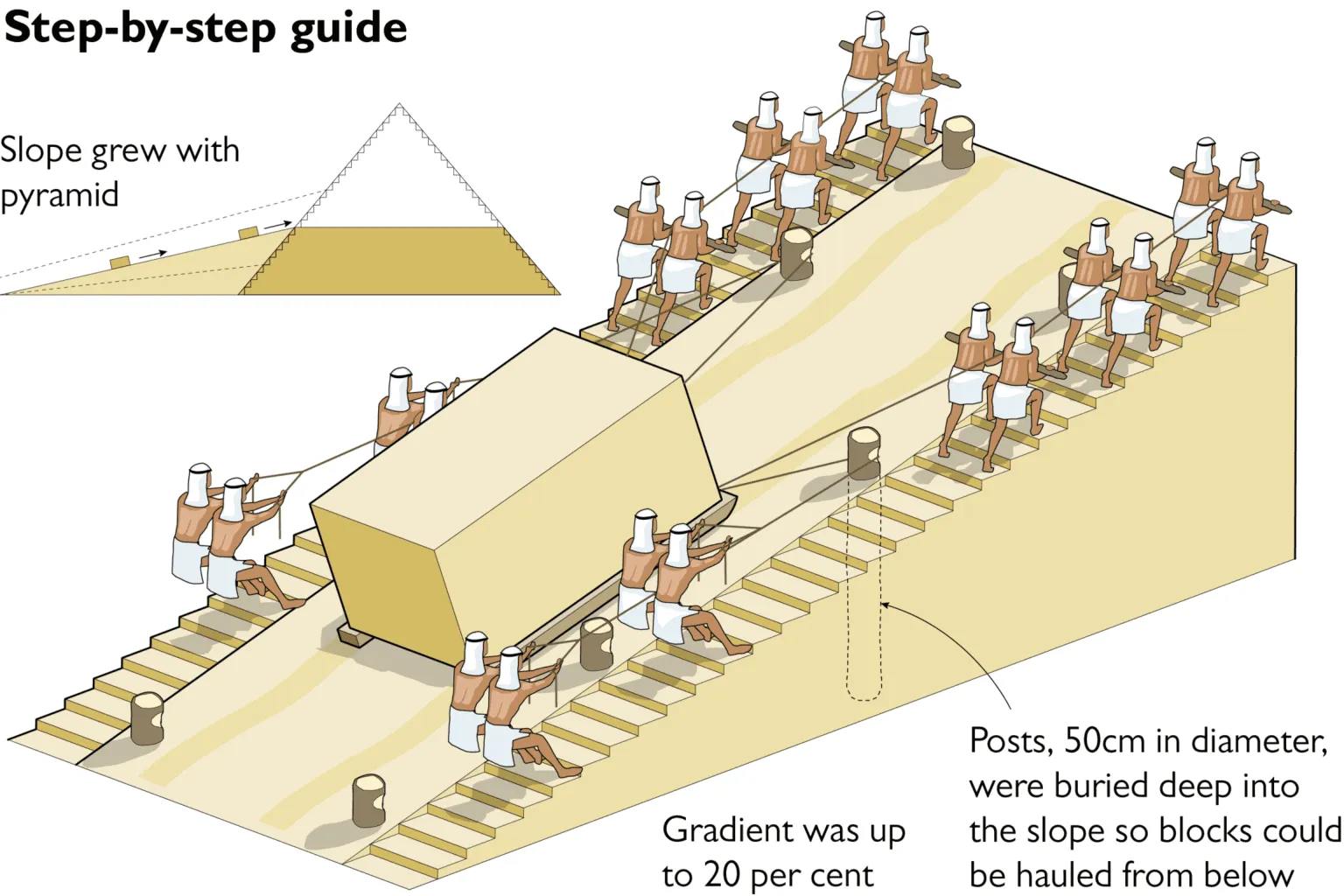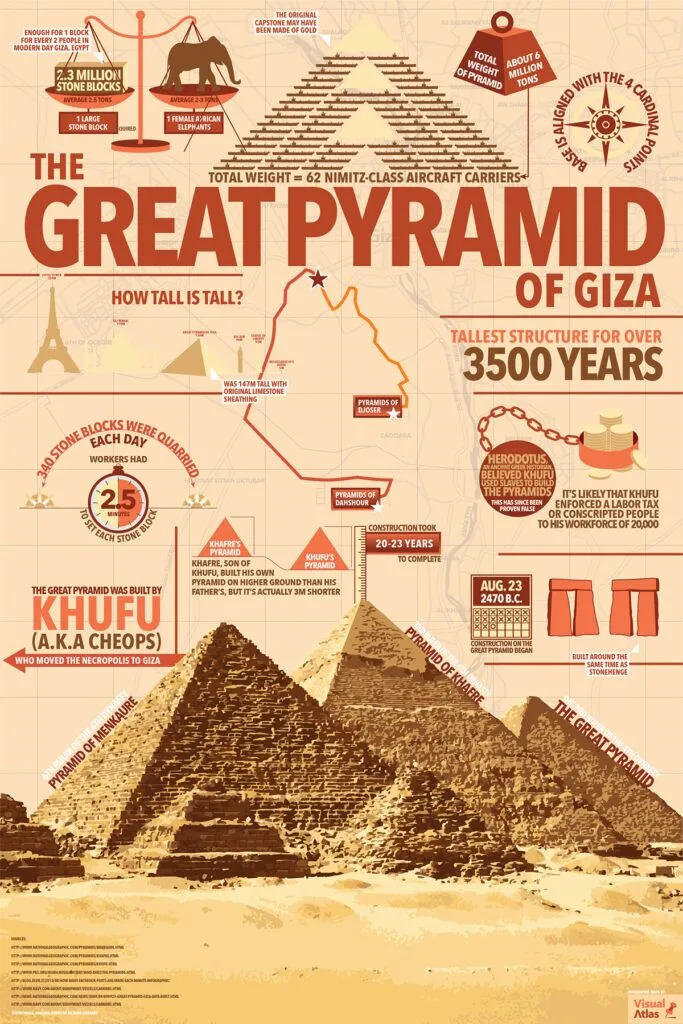Lifting the Ancient Marvels: A Deep Dive into the Rigging Wonders of the Pyramids of Egypt
Lifting the Ancient Marvels: A Deep Dive into the Rigging Wonders of the Pyramids of Egypt
The Pyramids of Egypt stand as enduring testaments to human ingenuity and engineering prowess. These colossal structures, shrouded in the mysteries of ancient civilizations, have captivated the world for millennia. Beyond their architectural grandeur, the construction of the pyramids involved intricate rigging projects that facilitated the movement of massive stone blocks. In this blog, we embark on a journey through time to explore the famous rigging projects behind the creation of the Pyramids of Egypt, unraveling the secrets of how these monumental structures were lifted from dreams to reality.
I. The Ancient Marvels:
- The Great Pyramid of Giza: At the forefront of Egypt’s pyramids is the Great Pyramid of Giza, standing as the largest and most iconic. Built during the reign of Pharaoh Khufu, it remains a marvel of precision engineering. The pyramid’s grandeur is matched only by the challenges its construction presented, calling for ingenious rigging solutions.
- Khafre’s Pyramid: Adjacent to the Great Pyramid, the Pyramid of Khafre is distinguished by its iconic Sphinx guarding its base. The construction of Khafre’s Pyramid involved unique rigging challenges, particularly in lifting the massive stones that form the core structure.
- The Red Pyramid: The Red Pyramid, situated at Dahshur, is another testament to ancient Egyptian architectural prowess. Its construction marked a transitional period in pyramid building, showcasing advancements in both design and rigging techniques.
II. Rigging Challenges and Solutions:
- Stone Quarrying: Rigging for the pyramids commenced at the quarries where the massive limestone and granite blocks were extracted. The precision with which these blocks were quarried, shaped, and transported required a sophisticated understanding of rigging principles.
- Transporting Massive Stones: The logistics of moving stones weighing several tons from quarries to construction sites demanded innovative rigging solutions. Archaeologists and engineers believe that sledges, lubricated with water to reduce friction, were utilized. Additionally, a system of levers and counterweights may have assisted in the lifting and positioning of stones.
- Building the Pyramid’s Core: As the pyramid rose, the challenge intensified. Rigging systems were crucial for lifting stones to higher levels, and a gradual but steady incline may have been constructed to facilitate this process. The exact mechanisms, whether ramps or internal spiral ramps, remain subjects of debate among scholars.
III. Innovations in Ancient Rigging:
- Leverage and Counterweight Systems: The use of levers and counterweights played a significant role in the ancient rigging toolkit. These simple yet effective mechanisms allowed workers to lift and maneuver massive stones with precision, showcasing the ancient Egyptians’ keen understanding of physics.
- Rolling Stones: The idea of rolling stones on cylindrical wooden beams or sledges lubricated with water or other substances is another innovative rigging method. This allowed for the transportation of stones across the desert terrain with relative ease.
- Inclined Planes and Ramps: The construction of ramps, whether straight or spiral, is a widely debated topic in Egyptology. Some theories propose that long straight ramps encircling the pyramid facilitated the upward movement of stones. Others suggest the presence of internal spiral ramps.

IV. The Human Element:
- Skilled Craftsmen and Labour Force: Rigging the pyramids required not only ingenuity in design but also a skilled and dedicated labor force. Craftsmen, engineers, and a vast workforce collaborated to bring the visions of pharaohs to life. The orchestration of these efforts showcases the organizational and managerial skills of ancient Egyptian society.
- Workforce Logistics: Managing such colossal construction projects necessitated meticulous planning of the labor force. The logistics of housing, feeding, and organizing the workers showcased an early form of project management, ensuring the efficient execution of rigging tasks.
V. Legacy and Modern Perspectives:
- Architectural Legacy: The pyramids remain iconic symbols of ancient Egyptian civilization, a testament to the enduring legacy of their architectural and engineering achievements. The precision with which these structures were built, using rudimentary rigging tools, continues to awe and inspire architects and engineers today.
- Modern Investigations: Advances in technology, including laser scanning and 3D modeling, have allowed modern scholars to revisit the mysteries of pyramid construction. These tools offer new perspectives on the rigging techniques employed, opening avenues for fresh interpretations and insights into ancient engineering.
In Conclusion:
The rigging projects behind the construction of the Pyramids of Egypt unveil a remarkable chapter in human history. As we marvel at these ancient structures, we are reminded of the ingenious rigging solutions employed by the ancient Egyptians to overcome monumental challenges. The legacy of their craftsmanship endures, serving as an inspiration for contemporary engineers and architects who continue to push the boundaries of what is possible. The Pyramids of Egypt stand not only as architectural wonders but also as testaments to the timeless human spirit of innovation and determination.
——————————————————————————————————————————————
The Hercules Group of Companies encompasses a wide portfolio of products and services across 7 diverse companies.


